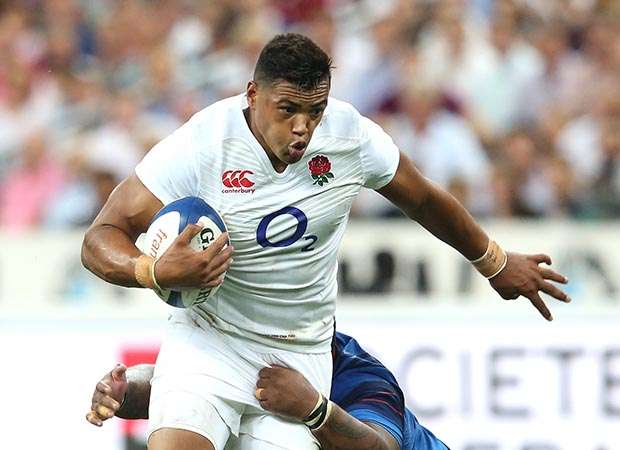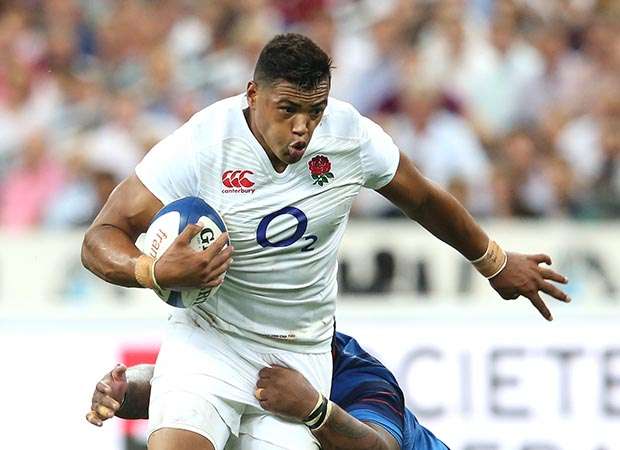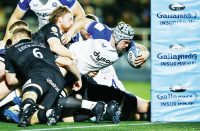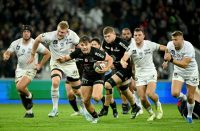 Apart from Stuart Lancaster saying that he had to make choices that brought tears to his eyes, it was business as usual after he announced his England World Cup 31 on Thursday. There was controversy but no surprises as their head coach’s relentless advocacy of Sam Burgess saw him named in the squad at the expense of Luther Burrell.
Apart from Stuart Lancaster saying that he had to make choices that brought tears to his eyes, it was business as usual after he announced his England World Cup 31 on Thursday. There was controversy but no surprises as their head coach’s relentless advocacy of Sam Burgess saw him named in the squad at the expense of Luther Burrell.
By that time we knew already through social media that despite Danny Cipriani’s impressive last-ditch charge against the French his goose was cooked, with young Henry Slade’s ascent assured not only by his greater positional versatility but also his bright debut against France Twickenham.
It was also no secret that since Dave Attwood was dropped after the win over Italy in the Six Nations his star was on the wane, with George Kruis considered a safer pair of hands. Attwood may be England’s biggest, strongest lock but Lancaster and forwards coach Graham Rowntree feel he has a tendency to go off script too much, and his power and presence lost out to Kruis, whose lineout calling and exceptional stamina are highly rated by the England coaches.
The fact that they now have four very similar ‘loose’ locks – with Joe Launchbury and Geoff Parling having played very little rugby over the last year and looking well short of a gallop – is a risk they were prepared to take. However, it is one that on the evidence of the two games against the French could leave them underpowered in the front five.
It is part of rugby’s rich tapestry that coaches have strong convictions about some players but not others, and the reality is that the likes of Attwood, Steffon Armitage, Ed Slater and Matt Kvesic up front, and backs like Cipriani, Kyle Eastmond, and the Wasps duo of Christian Wade and Joe Simpson, are not part of Lancaster’s ‘circle of trust’.
The fact that they would add some much-needed match-winning kryptonite to the England 31 does not, in the head coach’s opinion, supercede the risks that they bring.
However, thankfully, the waiting and over-long period of speculation about the final squad is over. It also has to be said that when Lancaster finally arrived at his convictions, he had the courage to go with them. Now he will succeed or fail on whether the players he has picked repay his trust in them.
It is crystal clear, too, that Burgess is the biggest gamble of Lancaster’s career, and that if his faith in ‘Slamming Sam’ is an error of judgement which backfires it could easily topple the head coach.
I was, and remain, enthusiastic about a Rugby League star of Burgess’ stature crossing over to try his hand at Rugby Union, however it was clear from the outset that it would be a race against time for him to learn enough to play at the highest level before the World Cup.
I believe that he lost that race, mainly because Bath were not prepared to forego their intricate diamond formation in order to get the ball in Burgess’ hands as a crash-bang-wallop inside-centre. Instead, he was used mainly as a decoy runner at 12 and for a few games even shunted to outside-centre, before he was transferred to blindside.
If Burgess is confused about positioning and timing he has good reason to be, and for Lancaster to then return him to inside-centre at Test level, in a World Cup, is an extraordinary leap of faith. Burgess’ track record in Rugby League suggests he is an indomitable character with courage and huge self-belief. However, hitting hard in the tackle and making a pass back to someone on a loop run, as he did on his debut against France, is hardly conclusive proof that he has acquired the acute positional radar and timing of a Test 12.
By contrast, Burrell has played two complete Six Nations campaigns, and has had the experience of playing for England in two Tests in New Zealand, the most inhospitable touring landscape on the planet. He has also won a Premiership title with Northampton. In the process of winning 13 caps – his most recent in Paris last weekend – he has scored three tries. Although he has had a few lapses, Burrell is a big, bustling centre who has shown the adaptability to play 12 and 13 successfully at international level, and has never let England down.
While it is true that Burrell is probably only one midfield injury away from being called into the 31, the scrutiny on Burgess – already glaring – will now intensify. Fortunately for Lancaster there is a handy deflector-shield at hand in the shape of Brad Barritt, who is undoubtedly their head coach’s first choice 12 – and who could limit Burgess’s participation during the tournament mostly to impact off the bench.
What is more significant, though less headline grabbing, are the question-marks that have appeared over the ability of the England pack to raise their game and give a dangerous backline a constant flow of fast front-foot ball.
Lancaster showed his honesty in refusing to hide behind training fatigue as a reason for the dire forward display by his first-string pack against France, but he also seemed confident that putting the failings right before they meet Fiji is just a matter of fine-tuning, with indiscipline at the breakdown at the top of his list.
Given the magnitude of the problems the French pack exposed at the scrum, lineout and breakdown that seems a trifle optimistic. Even though you would expect the English forwards to raise their level of intensity in all areas against Ireland following their lack of bite at the Stade de France, there appear to be shortfalls in power in the front five, speed in the back-row, and technique and skill in areas like the driving maul and hooking, which will be more difficult to fix.
It was inconceivable at the end of March, when England left France trailing in their wake by 20 points, that Lancaster would ever exchange his own shoes for Philippe Saint Andre’s. However, with the World Cup about to start, the French coach looks to have the more comfortable fit.























